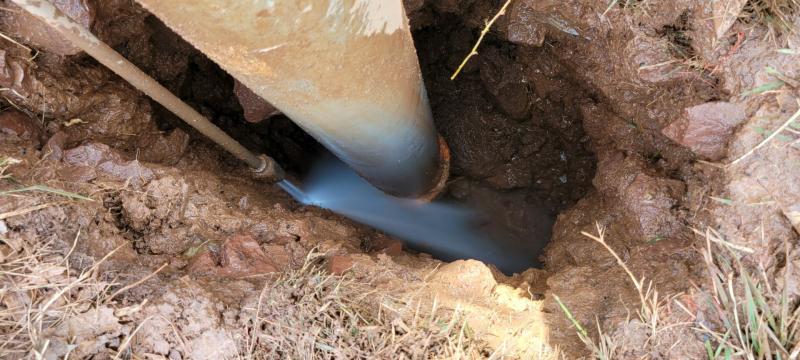Test Pitting in Hydro Excavation Projects
Similar but different to potholing.
Posted 22:41 July 19, 2023
Last Updated 22:41 July 19, 2023

In hydro excavation projects, test pitting is a technique employed to investigate the subsurface layers of soil and sediment in a controlled and non-destructive manner. Hydro excavation utilizes high-pressure water and a vacuum system to precisely excavate the ground, and test pitting is a valuable method within this process.
During hydro excavation test pitting, a small, targeted area is excavated using pressurized water to break up the soil and a vacuum system to remove the loosened material. This allows for a precise and controlled excavation, minimizing the risk of damaging underground utilities or sensitive infrastructure.
Test pitting in hydro excavation projects serves several purposes. It helps to determine the composition, density, and moisture content of the soil, providing important information for engineering and construction purposes. The collected soil samples can be analyzed to assess the soil's stability, load-bearing capacity, and other geotechnical properties, aiding in the design and planning of construction projects.
Additionally, test pitting in hydro excavation can be utilized to locate and verify the presence of underground utilities, such as pipes, cables, or utility lines. By carefully excavating around the marked utility areas, hydro excavation test pits allow for visual inspection and confirmation of the utility's location, aiding in mapping and designating safe zones for future construction or maintenance work.
On the other hand, potholing is a technique specifically focused on exposing and verifying the location of underground utilities. It involves creating precise holes or "potholes" using pressurized water and a vacuum system to safely expose and identify utility lines, cables, or pipes. Potholing helps ensure that excavation work can be conducted without damaging or interfering with critical underground infrastructure.
While test pitting and potholing serve different primary purposes, they often intersect in hydro excavation projects. Test pitting can be used to gather general information about the site, including soil composition and moisture content, while simultaneously verifying the presence and location of utilities through potholing. By integrating both techniques, hydro excavation teams can gain a comprehensive understanding of the subsurface conditions and ensure that excavation work proceeds safely and efficiently.
Furthermore, potholing can be considered a specific type of test pit designed specifically for utility verification. In this context, potholing can be seen as a focused and detailed test pit aimed at locating and exposing specific underground utilities, whereas other test pits may have broader objectives, such as soil analysis or archaeological investigations.
Overall, the overlap between test pitting and potholing in hydro excavation allows for a comprehensive assessment of subsurface conditions, including soil properties and the accurate identification of underground utilities. By combining these techniques, hydro excavation projects can be conducted with precision, minimizing risks and ensuring the success of construction or maintenance activities.
In summary, test pitting in hydro excavation projects involves using the precision and non-destructive capabilities of hydro excavation techniques to excavate small areas and gather important information about soil composition, geotechnical properties, and the location of underground utilities. It plays a crucial role in ensuring the success, safety, and efficiency of hydro excavation projects.
If you'd like to discuss your upcoming excavation project, contact the digging professionals here at Hole Hogz. We handle commercial, municipal, and residential projects. Our service area includes Las Vegas, Henderson, Boulder City, and most parts of southern Nevada.
